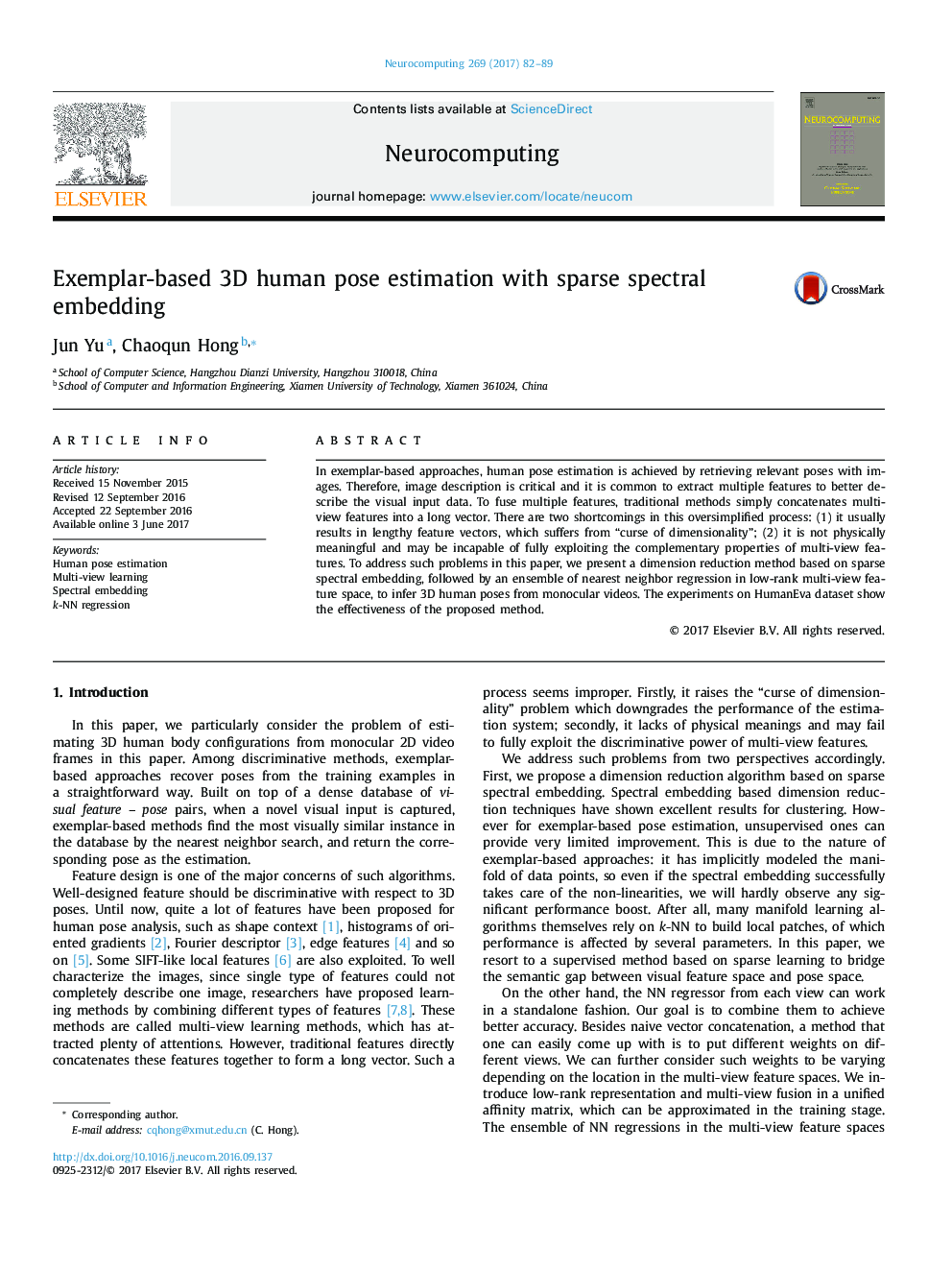| Article ID | Journal | Published Year | Pages | File Type |
|---|---|---|---|---|
| 4946867 | Neurocomputing | 2017 | 8 Pages |
In exemplar-based approaches, human pose estimation is achieved by retrieving relevant poses with images. Therefore, image description is critical and it is common to extract multiple features to better describe the visual input data. To fuse multiple features, traditional methods simply concatenates multi-view features into a long vector. There are two shortcomings in this oversimplified process: (1) it usually results in lengthy feature vectors, which suffers from “curse of dimensionality”; (2) it is not physically meaningful and may be incapable of fully exploiting the complementary properties of multi-view features. To address such problems in this paper, we present a dimension reduction method based on sparse spectral embedding, followed by an ensemble of nearest neighbor regression in low-rank multi-view feature space, to infer 3D human poses from monocular videos. The experiments on HumanEva dataset show the effectiveness of the proposed method.
